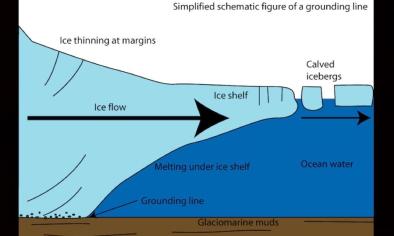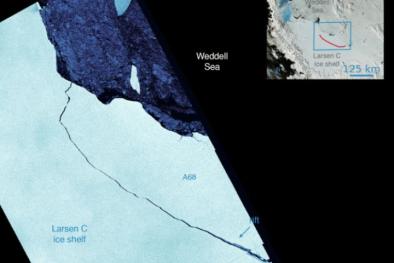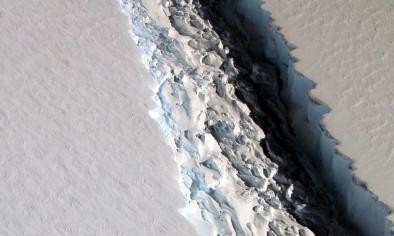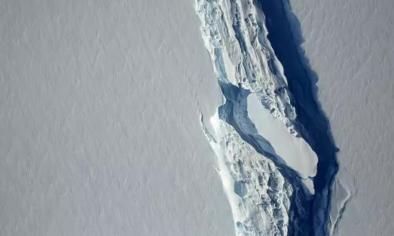Brief Communication: Newly developing rift in Larsen C Ice Shelf presents significant risk to stability
States that an established rift in the Larsen C Ice Shelf, formerly constrained by a suture zone containing marine ice, grew rapidly during 2014 and is likely in the near future to generate the largest calving event since the 1980s and result in a new minimum area for the ice shelf.
Investigates the recent development of the rift
Quantifies the projected calving event and, using a numerical model, assesses its likely impact on ice shelf stability
Finds that the ice front is at risk of becoming unstable when the anticipated calving event occurs
_______
...
"The predicted ice loss is also not unprecedented: in the late 1980s a calving event removed 14% of Larsen C Ice Shelf. The real significance of this new rift to this ice shelf is two-fold. The predicted calving will reduce its area to a new minimum both in terms of direct observations, and probably since the last interglacial period...Second, unlike during the 1980s, but highly comparable to the development of Larsen B Ice Shelf between 1995 and 2002, the resulting geometry may be unstable."
"...Under Scenario II, the unstable part of the new ice front is considerably larger and, even if the flow field adapts quickly to the new geometry, parts of the calving margin remain unstable and prone to run-away calving of a similar nature to Larsen B Ice Shelf between 1995 and 2002. Assessing the stress field according to Doake et al. (1998), Scenario II would also be considered as an unstable calving front. Our model demonstrates that the newly developing rift presents a considerable risk to the stability of the Larsen C Ice Shelf."

Related Content






